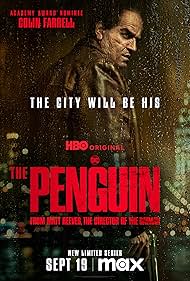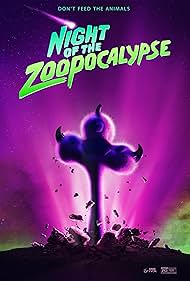The DC Studios logo is on a rainy Gotham alley
After the events of The Batman (2022), Oz Cobb, aka the Penguin, stages a show to take over Gotham’s criminal underworld. Colin Farrell and Cristin Milioti talk about how they got their start during the making of The Penguin. Colin Farrell fought hard to get his own version of « The Penguin’s Smoking Tobacco » in The Batman (2022), but failed. However, in his own series, the character is depicted as an occasional tobacco user, preferring cigars. An umbrella falls and the logo is replaced with the Warner Bros.
Graham Norton and guests: Lady Gaga/Demi Moore/Colin Farrell/Richard Ayoade/Jack Savoretti (2024)
logo. HBO’s new show The Penguin, part of the Matt Reeves film; The Batman (2022) is a thrilling dive into Gotham City’s criminal underworld. Starring Colin Farrell as the titular character Oswald Cobblepot, aka The Penguin, the series expands on the gritty, gritty tone set in the film and offers fans a new yet familiar experience in the Batman universe. Unlike most superhero-related content, The Penguin focuses on the darker, more human elements of Gotham’s criminal underworld, moving away from the caped crusader to focus on the rise of one of Batman’s most notorious foes. Set immediately after the events of The Batman, the series explores The Penguin’s journey to fill the remaining power vacuum in Gotham’s criminal empire.
Colin Farrell’s performance as The Penguin is simply amazing
With Carmine Falcone dead and Gotham’s infrastructure in chaos, The Penguin seizes the opportunity to rise through the ranks, determined to control the city’s crime syndicates. The focus is on his transformation from underworld boss to major crime lord, giving The Penguin the feel of a mob drama more akin to The Sopranos than a traditional superhero show. The show cleverly avoids relying too heavily on Batman’s shadow, allowing The Penguin to truly shine as the lead. In addition to the presence of Gotham’s influential protector, it creates a new and interesting dynamic where Oswald is free to operate in a morally ambiguous space. This narrative shift feels refreshing for the genre and adds depth to Gotham’s criminal underworld without overly focusing on the superhero spectacle.
Farrell conveys layers of the character, pushing the boundaries of the stereotypical villain’s portrayal
Physically unrecognizable due to his prosthetics, Farrell fully inhabits the character with a nuanced performance that balances the mob boss’ brutality with the insecurities and ambitions that drive him. The Penguin is no longer just a caricature of a deformed, umbrella-carrying villain; instead, he’s portrayed as a ruthless, calculating player in Gotham’s criminal hierarchy, making him both terrifying and oddly likable. His Oswald Cobblepot is cunning, manipulative, and ready to break bones, but he’s also a man driven by a deep-seated inferiority complex and a desire for respect. Watching him navigate the treacherous waters of Gotham’s criminal underworld is a compelling and grounded take on the character, making The Penguin a compelling character study. Gritty Atmosphere and Tone In terms of atmosphere, The Penguin remains as gritty and rainy-day aesthetic as fans have come to love in The Batman.
The dark, crime-ridden streets of Gotham are beautifully shot, emphasizing realism over comic book extravagance
The tone of the series is grim, violent, and suspenseful, reminiscent of neo-noir crime thrillers. Every scene is imbued with Gotham’s corruption and decay, and danger seems to lurk in every shadow. The production design is top-notch, and the sets feel like a natural extension of Reeves’ Gotham City. The seedy clubs, deserted alleys, and lavish mansions of crime lords all add up to a spectacular show.




 15/30
15/30
